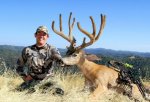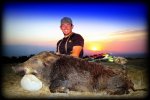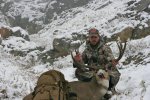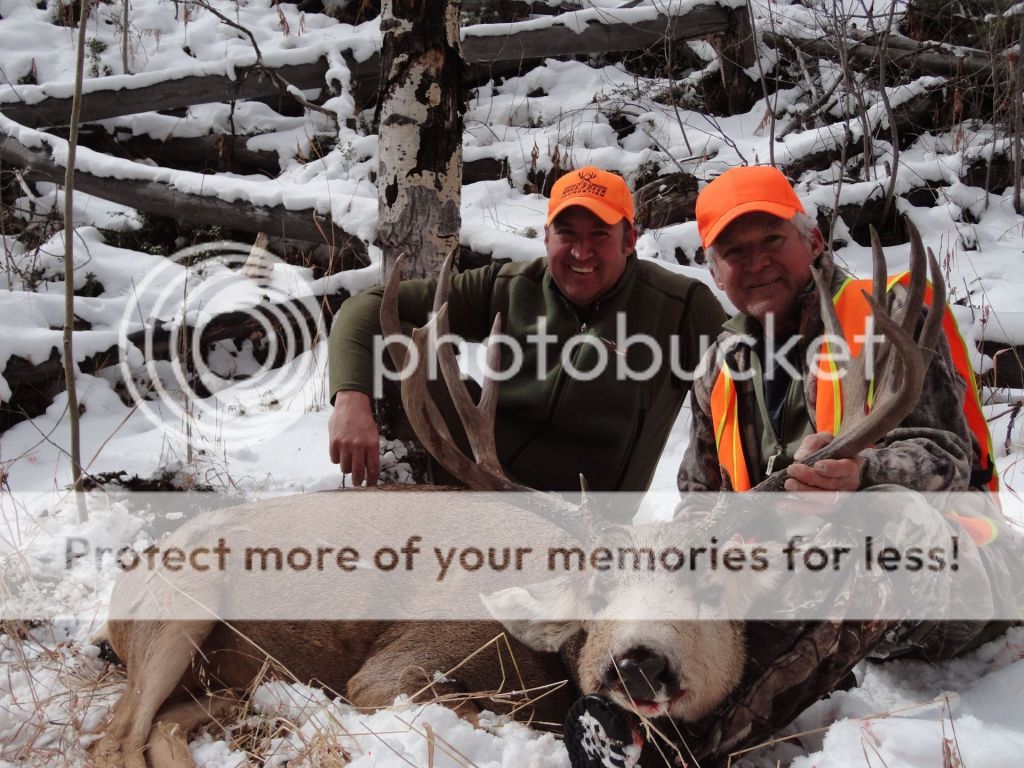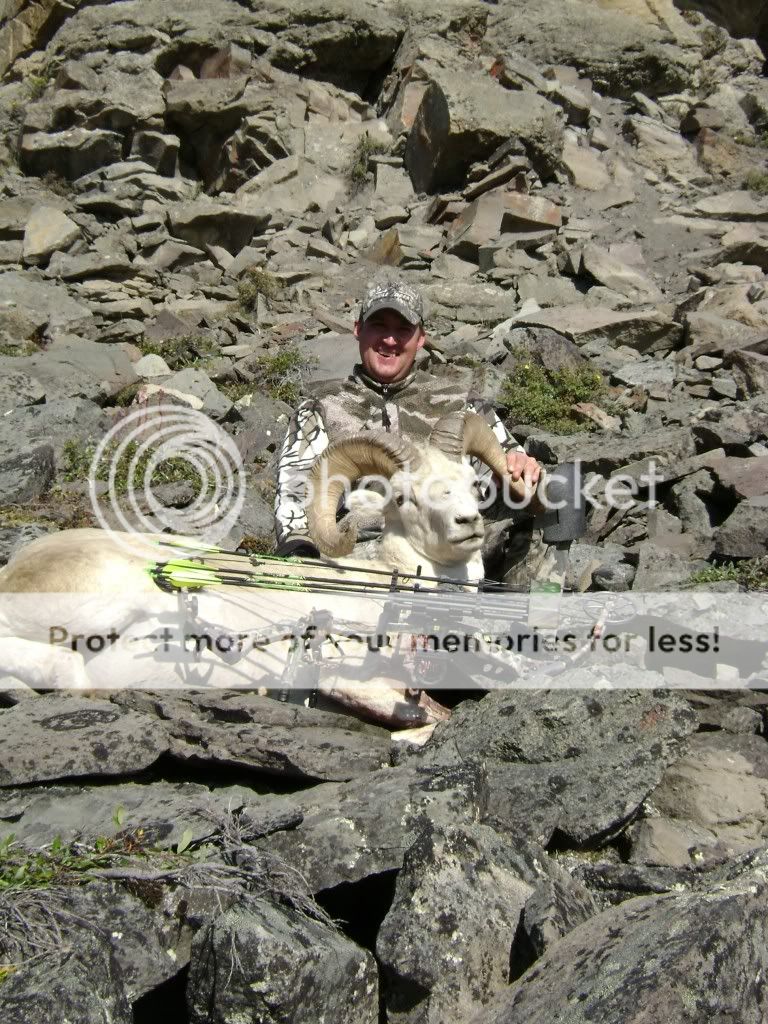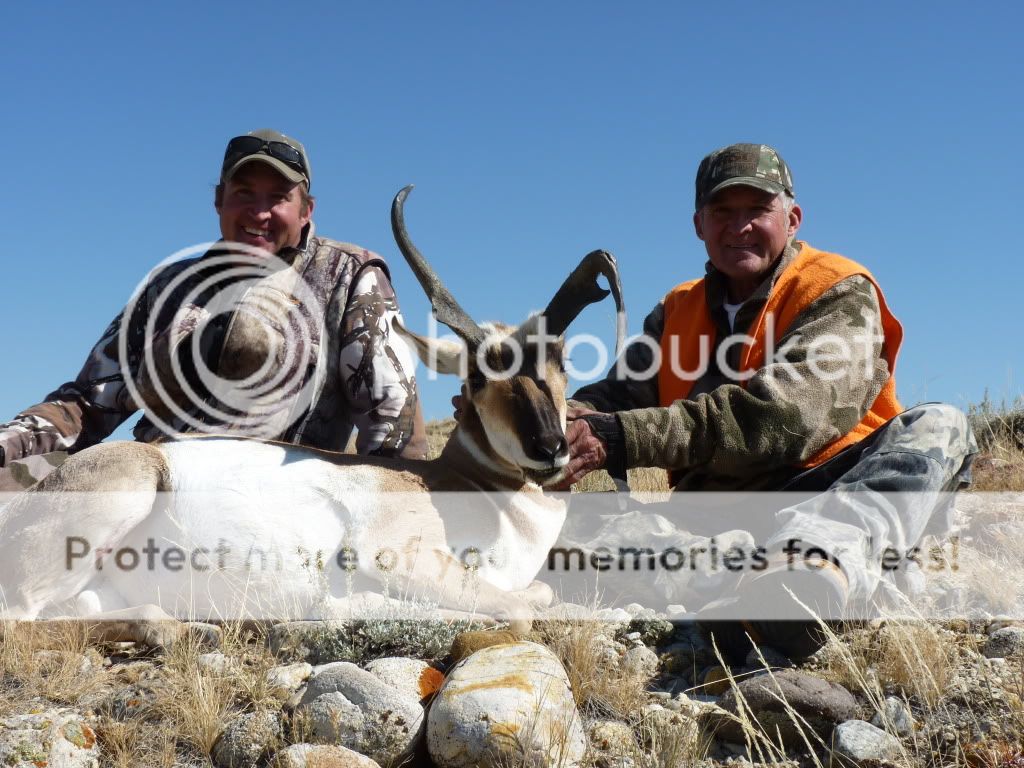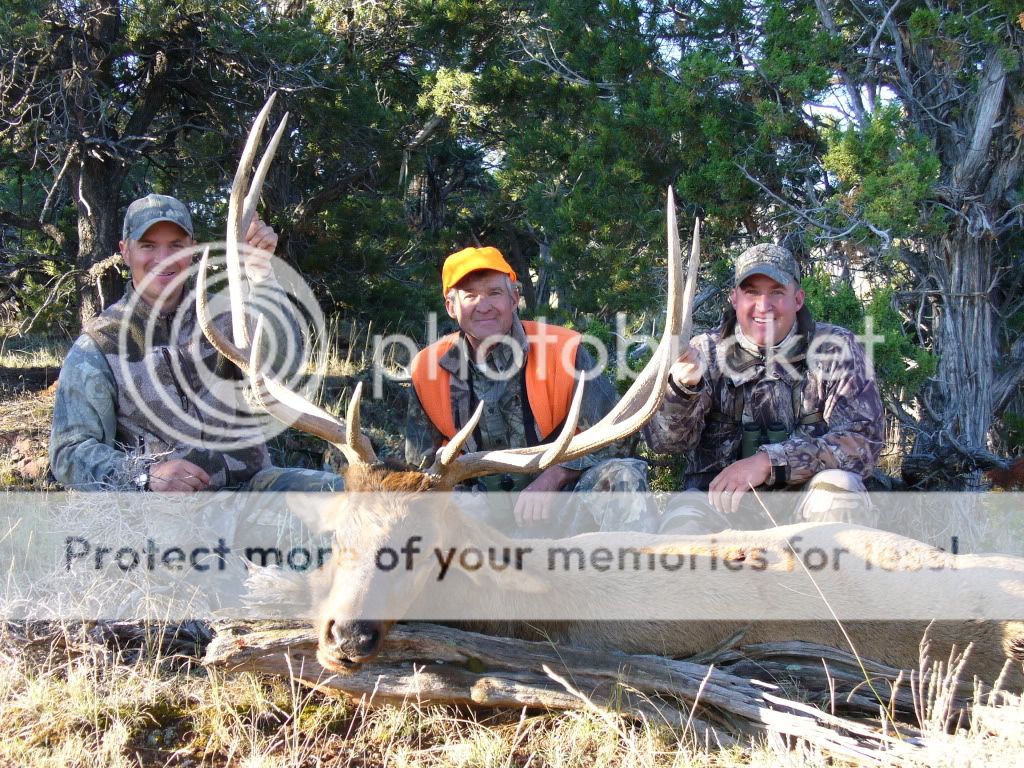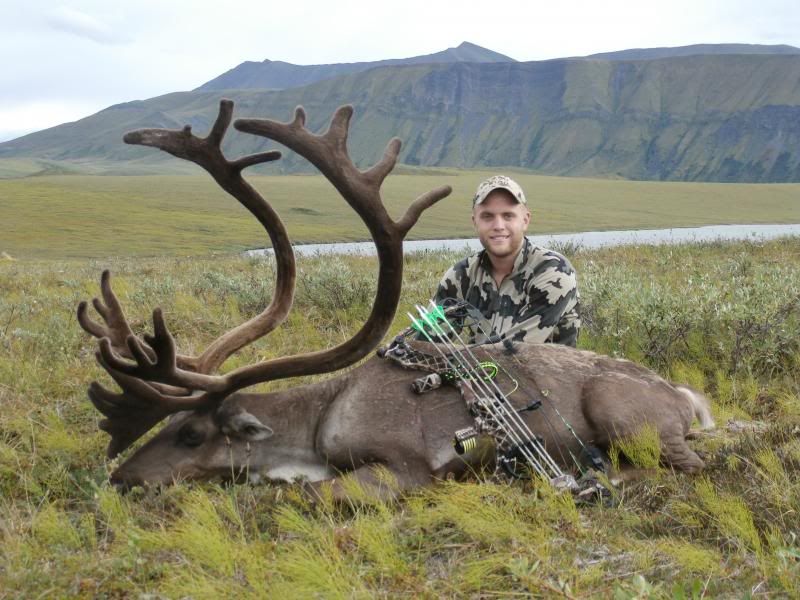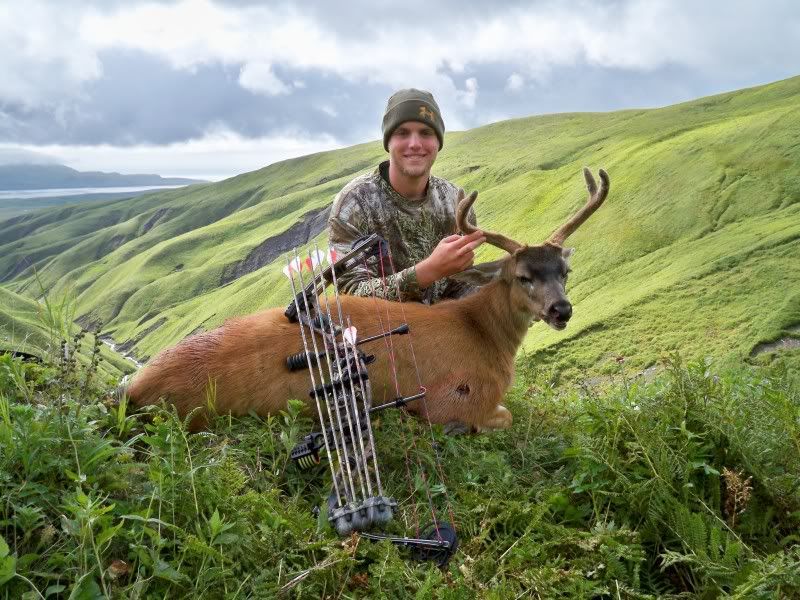Over the course of the season I have seen some pictures show up in my news feed and instagram that have not done justice to a quality hero shot picture. One in particular shows a very good mule deer with a mangled rear end from botched shot. The quality/viewability of the picture is great, and it showcases the animals headgear very well. The problem with the picture is that there is a mangled leg on one side of the picture, and frankly this is the type of picture that can do damage to many people's perceptions of hunting.
None of us like to make a bad shot, and truthfully it makes me sick to think about a couple poor shots that I made which hit the animal but didn't tip it over. In 2011 I didn't lead the deer in my Avatar enough and I hit him in the right rear quarter. The shot would have killed him, but not in the efficient manner that it should have. My partner and I found him in the bottom of the basin, very much alive but unable to go any further. I had broken the rear leg and the bullet had traveled into his vitals with my .300 Wby Mag and I wish it would have dropped him on the first shot. I dispatched him a little later with a kill shot through the lungs at close range so as not to destroy any more meat.
We made a lot of effort to make sure that the mangled rear leg was not in the picture. I didn't think it was fair to remember him that way, or to expose the people viewing my blog/threads to that.
I know that blood, butchering, and field care is messy business. A poor shot will happen, and there will be some that we aren't proud of. But I also believe that in our pictures we should do our best to represent the animal and our activity to the best of our ability. Especially in our day and age where the media is huge, everyone all over the globe can see our pictures. After a really bad shot this may mean not posting a few pictures and just keeping them for ourselves at moments. Or it may mean moving the animal to a position that will give it a better reflection.
So, here are my field/hero shot rules to live by:
1. Always look for the best way to present the animal. This may mean moving it from the spot where it dropped, a hero shot with a pool of the animals blood isn't a great shot.
2. The less blood the better(sometimes this is the most difficult).
3. Put the tongue back in it's mouth.
4. Crop the pictures if there is no way to avoid a bad shot.
5. Do your best to be a good photographer, we all love the hero shots and getting to look at the trophies! The better you are at taking quality pictures the better it is for everyone involved.
Please add any tips and tricks you use to get great field photos, especially ones that reflect on the animal well!
None of us like to make a bad shot, and truthfully it makes me sick to think about a couple poor shots that I made which hit the animal but didn't tip it over. In 2011 I didn't lead the deer in my Avatar enough and I hit him in the right rear quarter. The shot would have killed him, but not in the efficient manner that it should have. My partner and I found him in the bottom of the basin, very much alive but unable to go any further. I had broken the rear leg and the bullet had traveled into his vitals with my .300 Wby Mag and I wish it would have dropped him on the first shot. I dispatched him a little later with a kill shot through the lungs at close range so as not to destroy any more meat.
We made a lot of effort to make sure that the mangled rear leg was not in the picture. I didn't think it was fair to remember him that way, or to expose the people viewing my blog/threads to that.
I know that blood, butchering, and field care is messy business. A poor shot will happen, and there will be some that we aren't proud of. But I also believe that in our pictures we should do our best to represent the animal and our activity to the best of our ability. Especially in our day and age where the media is huge, everyone all over the globe can see our pictures. After a really bad shot this may mean not posting a few pictures and just keeping them for ourselves at moments. Or it may mean moving the animal to a position that will give it a better reflection.
So, here are my field/hero shot rules to live by:
1. Always look for the best way to present the animal. This may mean moving it from the spot where it dropped, a hero shot with a pool of the animals blood isn't a great shot.
2. The less blood the better(sometimes this is the most difficult).
3. Put the tongue back in it's mouth.
4. Crop the pictures if there is no way to avoid a bad shot.
5. Do your best to be a good photographer, we all love the hero shots and getting to look at the trophies! The better you are at taking quality pictures the better it is for everyone involved.
Please add any tips and tricks you use to get great field photos, especially ones that reflect on the animal well!

